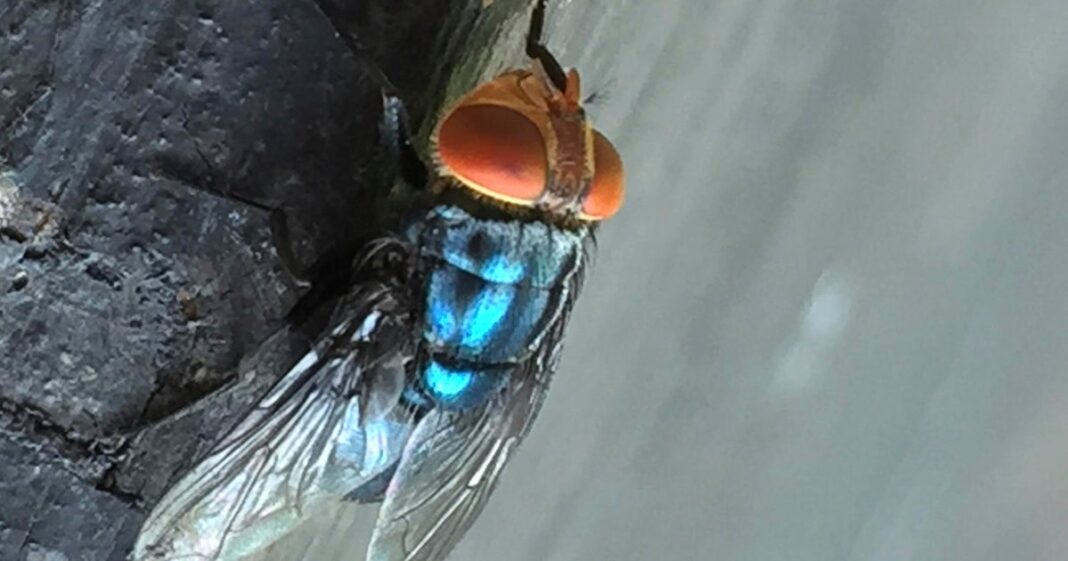The U.S. government is preparing to breed billions of flies and dump them out of airplanes over Mexico and southern Texas to fight a flesh-eating maggot.
That sounds like the plot of a horror movie, but it is part of the government’s plans for protecting the U.S. from a bug that could devastate its beef industry, decimate wildlife and even kill household pets. This weird science has worked well before.
“It’s an exceptionally good technology,” said Edwin Burgess, an assistant professor at the University of Florida who studies parasites in animals, particularly livestock. “It’s an all-time great in terms of translating science to solve some kind of large problem.”
AP
The targeted pest is the flesh-eating larva of the New World Screwworm fly. The U.S. Department of Agriculture plans to ramp up the breeding and distribution of adult male flies — sterilizing them with radiation before releasing them. They mate with females in the wild, and the eggs laid by the female aren’t fertilized and don’t hatch. There are fewer larvae, and over time, the fly population dies out.
It is more effective and environmentally friendly than spraying the pest into oblivion, and it is how the U.S. and other nations north of Panama eradicated the same pest decades ago. Sterile flies from a factory in Panama kept the flies contained there for years, but the pest appeared in southern Mexico late last year.
The USDA expects a new screwworm fly factory to be up and running in southern Mexico by July 2026. It plans to open a fly distribution center in southern Texas by the end of the year so that it can import and distribute flies from Panama if necessary.
The scientific name for the parasite, Cochliomyia hominivorax, is roughly translated to “man-eater,” according to the USDA’s Animal and Plant Health Inspection Service.
“When NWS fly larvae (maggots) burrow into the flesh of a living animal, they cause serious, often deadly damage to the animal,” the USDA says. “NWS can infest livestock, pets, wildlife, occasionally birds and, in rare cases, people.”
AP
Threats to the beef industry
Most fly larvae feed on dead flesh, making the New World screwworm fly and its Old World counterpart in Asia and Africa outliers — and for the American beef industry, a serious threat. Females lay their eggs in wounds and, sometimes, exposed mucus.
“A thousand-pound bovine can be dead from this in two weeks,” said Michael Bailey, president elect of the American Veterinary Medicine Association.
Veterinarians have effective treatments for infested animals, but an infestation can still be unpleasant — and cripple an animal with pain.
Don Hineman, a retired western Kansas rancher, recalled infected cattle as a youngster on his family’s farm.
“It smelled nasty,” he said. “Like rotting meat.”
Scientists plan to use the fly’s biology against it
The New World screwworm fly is a tropical species, unable to survive Midwestern or Great Plains winters, so it was a seasonal scourge. Still, the U.S. and Mexico bred and released more than 94 billion sterile flies from 1962 through 1975 to eradicate the pest, according to the USDA.
The numbers need to be large enough that females in the wild can’t help but hook up with sterile males for mating.
One biological trait gives fly fighters a crucial wing up: Females mate only once in their weekslong adult lives.
Why does the U.S. want to breed more flies?
Alarmed about the fly’s migration north, the U.S. temporarily closed its southern border in May to imports of live cattle, horses and bison and it won’t be fully open again at least until mid-September.
But female flies can lay their eggs in wounds on any warm-blooded animal, and that includes humans.
Decades ago, the U.S. had fly factories in Florida and Texas, but they closed as the pest was eradicated.
The Panama fly factory can breed up to 117 million a week, but the USDA wants the capacity to breed at least 400 million a week. It plans to spend $8.5 million on the Texas site and $21 million to convert a facility in southern Mexico for breeding sterile fruit flies into one for screwworm flies.
Raising hundreds of millions of flies
In one sense, raising a large colony of flies is relatively easy, said Cassandra Olds, an assistant professor of entomology at Kansas State University.
But, she added, “You’ve got to give the female the cues that she needs to lay her eggs, and then the larvae have to have enough nutrients.”
Fly factories once fed larvae horse meat and honey and then moved to a mix of dried eggs and either honey or molasses, according to past USDA research. Later, the Panama factory used a mix that included egg powder and red blood cells and plasma from cattle.
In the wild, larvae ready for the equivalent of a butterfly’s cocoon stage drop off their hosts and onto the ground, burrow just below the surface and grow to adulthood inside a protective casing making them resemble a dark brown Tic Tac mint. In the Panama factory, workers drop them into trays of sawdust.
Security is an issue. Sonja Swiger, an entomologist with Texas A&M University’s Extension Service, said a breeding facility must prevent any fertile adults kept for breeding stock from escaping.
Risks associated with dropping flies from an airplane
Dropping flies from the air can be dangerous. Last month, a plane freeing sterile flies crashed near Mexico’s border with Guatemala, killing three people.
In test runs in the 1950s, according to the USDA, scientists put the flies in paper cups and then dropped the cups out of planes using special chutes. Later, they loaded them into boxes with a machine known as a “Whiz Packer.”
The method is still much the same: Light planes with crates of flies drop those crates.
Burgess called the development of sterile fly breeding and distribution in the 1950s and 1960s one of the USDA’s “crowning achievements.”
Some agriculture officials argue now that new factories shouldn’t be shuttered after another successful fight.
“Something we think we have complete control over — and we have declared a triumph and victory over — can always rear its ugly head again,” Burgess said.
AP




